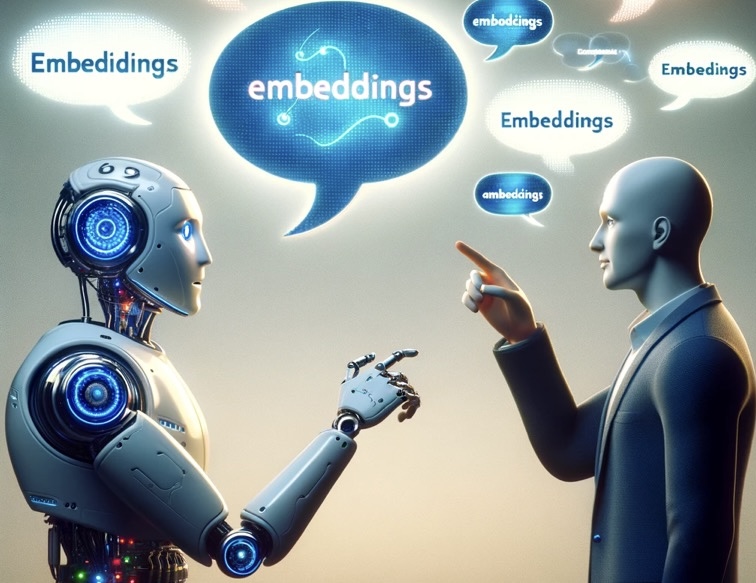Vector Embeddings: The future language of data
 Embedder
Embedder
We stand at an inflection point in history, on the precipice of a technological revolution driven by artificial intelligence. A revolution fundamentally transforming the way we understand and interact with data. At the core of this seismic shift are vector embeddings - dense numerical representations of words, sentences, documents, and more. Vector embeddings, once a niche concept in the realms of machine learning and data science, will emerge not just as a tool, but as the future universal language of data.
Bytes – the once lingua franca of the digital world – are yielding to embeddings. Every piece of information, from pixels dancing in a video to the DNA code weaving life, is finding its voice in these multidimensional vector embeddings. By converting data into vector embeddings, we are essentially teaching machines to grasp the subtleties of language, the patterns in human behavior, and the complexities of the world around us. Vector embeddings are set to become as ubiquitous and essential as bytes in the digital realm. They are the building blocks of a new era of communication between humans and machines.
But why are vector embeddings so revolutionary? The answer lies in their ability to capture and convey meaning. Unlike traditional data representations, embeddings encapsulate context, relationships, and nuances. They enable machines to not just process but also 'understand' the data in a way that was previously unattainable.
Embedding algorithms draw inspiration from fields like linguistics, neuroscience, and mathematics. By translating data into a universal vector embeddings format, they uncover hidden structures and relationships within. This vector view of data is key to advancing AI by providing the substrate for machine learning algorithms to identify patterns that would be imperceptible using raw data alone.
Mastering this new language of data is no mere fancy – it's like learning a Rosetta Stone for the future. It's understanding the language of search engines that navigate galaxies of information with uncanny precision, or the secret sauce powering chatbots like ChatGPT that converse with empathy and charm. It's the key to unlocking the doors of recommendation systems that anticipate our needs before we even voice them, and the foundation for algorithms that decipher the complex dance of emotions in social media posts.
The reach of embeddings will ultimately extend beyond text and language. We are beginning to see embeddings applied to images, networks, molecules, code, neuroscience and more. As computation pervades every aspect of life, embeddings provide a way to imbue digital representations with human-like understanding. The applications are limitless - from detecting disease, to discovering new materials, to creating art.
In conclusion, the exploration of vector embeddings is more than a technological endeavor; it is a journey towards a future where data becomes a universal language, bridging the gap between humans and machines. Vector embeddings hold the promise to capture and encode the complexity of our world into a format intelligible to machines. Embeddings mark the next stage in our coevolution with technology, enabling communication and cooperation at a level that has not been possible.
Subscribe to my newsletter
Read articles from Embedder directly inside your inbox. Subscribe to the newsletter, and don't miss out.
Written by